Online Presence Management Tips for Small Businesses
Our Findings
- Most small businesses (71%) have an online presence in the form of a website. Still, about one in four small businesses have no website, which means they miss out on making an impression on potential customers.
- Almost half of small businesses without a website (44%) plan to create one in 2021. Website tools and experts will be key to creating and maintaining a new online presence.
- Almost half of small businesses (46%) have in-house employees managing their websites, and 32% use DIY website builder software. Managing an online presence in-house can be challenging, though. About one-third of small businesses (34%) partner with an agency.
- One-quarter of small businesses with websites (24%) use their website mainly to showcase products and services, making it the top reason small businesses have a website in 2021.
- Low website traffic was the main challenge 21% of small businesses faced with their websites. Small businesses can boost website traffic by investing in SEO strategies.
- Almost half of small businesses (43%) plan to invest in improving their website page speed and performance, and 30% plan to embed videos on web pages. This may be in response to Google’s algorithm updates that prioritize website performance and video content.
Need help selecting a company?
Based on your budget, timeline, and specifications we can help you build a shortlist of companies that perfectly matches your project needs. Get started by submitting your project details.
Build a Website to Establish an Online Presence
Many argue that businesses have needed websites since the dawn of the internet age. In the COVID-19 age, however, the need for a robust online presence has become even more apparent. Most small businesses (71%) have a website, but 28% still don’t, despite websites being an easy way to establish and maintain an online presence. 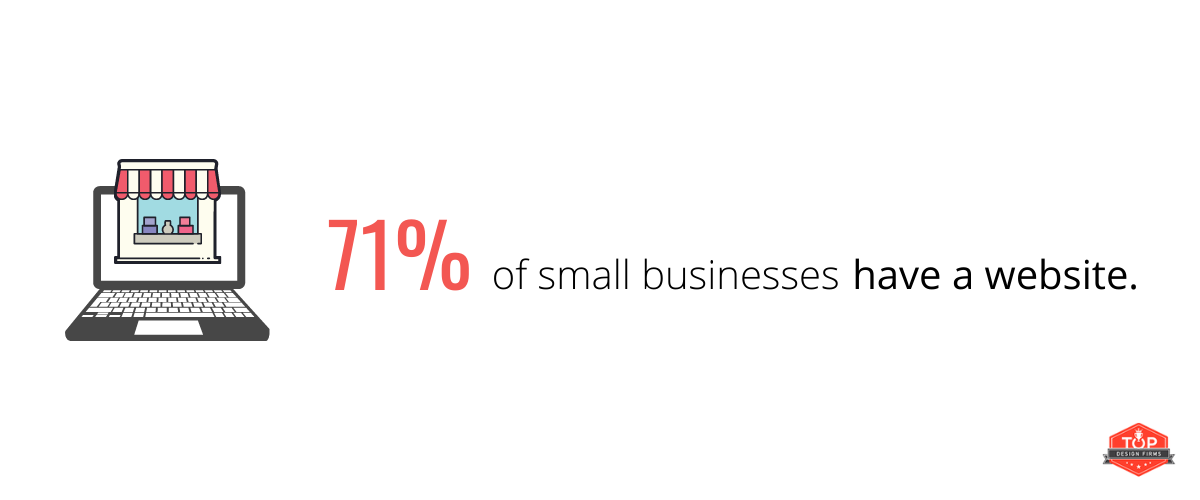 A website is the anchor of a small business’s online presence. Websites provide a central location for all information about a business, including location, contact information, products and services, and even information about the company’s brand. Websites are also customizable, which makes them a better choice to reflect a small business brand. Social media profiles can include company logos, but only small business websites can be tailored to a business’s specific colors, fonts, and designs. The COVID-19 pandemic made it challenging for small businesses to connect with potential customers in-person or through word-of-mouth channels. Building a website in 2021 can help small businesses establish themselves online through an authoritative source of information and resources for current and potential customers.
A website is the anchor of a small business’s online presence. Websites provide a central location for all information about a business, including location, contact information, products and services, and even information about the company’s brand. Websites are also customizable, which makes them a better choice to reflect a small business brand. Social media profiles can include company logos, but only small business websites can be tailored to a business’s specific colors, fonts, and designs. The COVID-19 pandemic made it challenging for small businesses to connect with potential customers in-person or through word-of-mouth channels. Building a website in 2021 can help small businesses establish themselves online through an authoritative source of information and resources for current and potential customers.
Identify External Resources to Maintain Your Website
Small business websites are often easy to set up, but can be more challenging to maintain. Almost half of small businesses (46%) rely on in-house employees to manage their websites, and about one-third (32%) use a website builder. 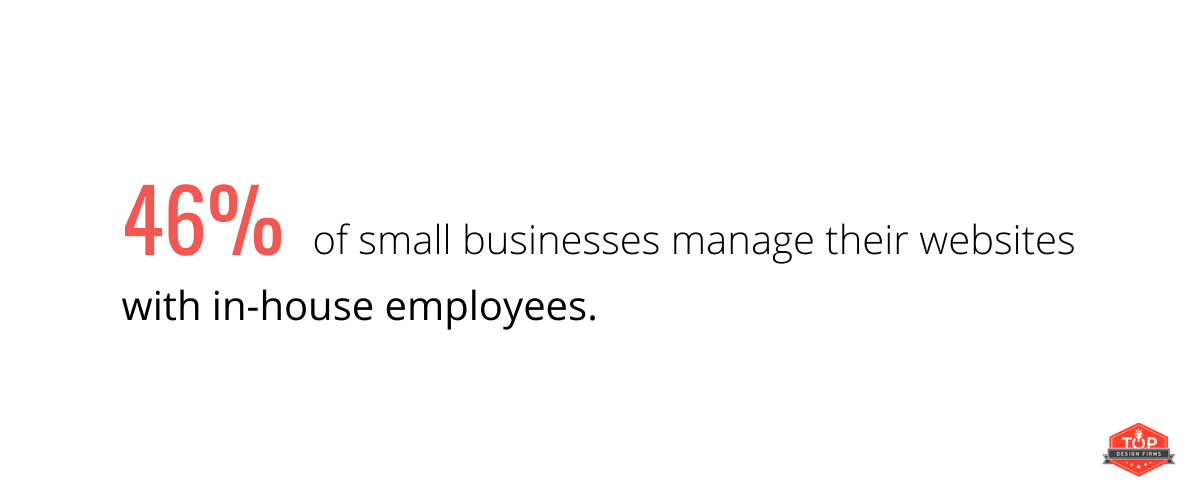 Website builders such as Squarespace and Wix are helpful for establishing a simple website that’s easy for in-house employees and customers to use. For more complicated or custom features, however, small businesses should turn to professional web designers and developers to make sure their website doesn’t compromise on usability. About one-third of small businesses (34%) partner with an agency to maintain their website presence. External partners and agencies can fill in the expertise gaps on your team. A UX designer, for example, can optimize how your potential customers experience your website. They can do this by conducting user research interviews, something that in-house employees may not have time to do along with their other responsibilities. User interviews are an important part of UX design and allow designers to understand how people interact with a website. These insights can help small businesses improve their websites overall.
Website builders such as Squarespace and Wix are helpful for establishing a simple website that’s easy for in-house employees and customers to use. For more complicated or custom features, however, small businesses should turn to professional web designers and developers to make sure their website doesn’t compromise on usability. About one-third of small businesses (34%) partner with an agency to maintain their website presence. External partners and agencies can fill in the expertise gaps on your team. A UX designer, for example, can optimize how your potential customers experience your website. They can do this by conducting user research interviews, something that in-house employees may not have time to do along with their other responsibilities. User interviews are an important part of UX design and allow designers to understand how people interact with a website. These insights can help small businesses improve their websites overall.
Create Pages to Showcase and Purchase Products and Services
A website is an important place for businesses to communicate with current and potential customers. These customers should be able to access the most important information about the business quickly and easily. About one-quarter of small businesses (24%) say the main purpose of their website is to showcase their products and services, making it the top reason small businesses have websites. 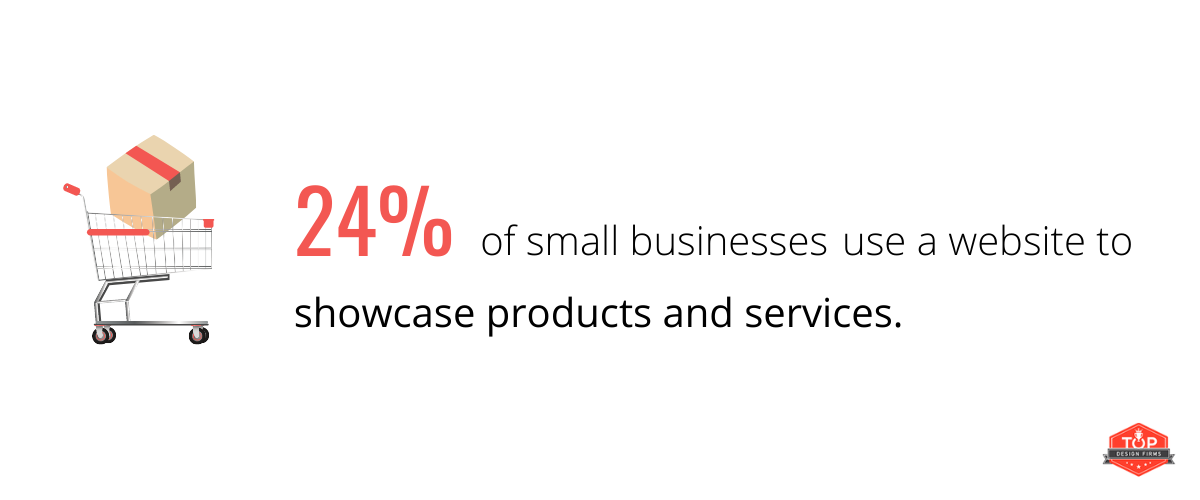 Small business also create websites to:
Small business also create websites to:
- Allow customers to make a purchase (17%)
- Establish credibility and authority (17%)
- Be found in search engine results pages (14%)
This shows that small businesses aren’t just creating websites to house contact information and images, but to help nurture and convert leads into sales. There are many user-friendly e-commerce options available for small businesses to include on their website. E-commerce features such as shopping carts, streamlined payment transactions, and marketing support can help drive sales and please customers. Shopify, for example, is a popular e-commerce tool that integrates with many popular website platforms. 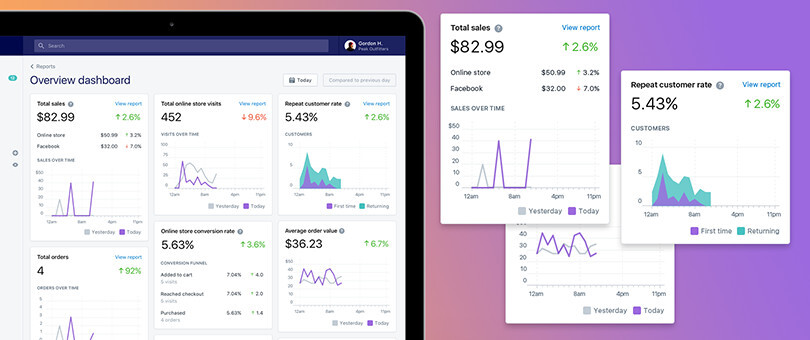 Source Shopify and similar e-commerce tools also include customization features that you can use to tailor your shopping experience to your specific brand. Chatbots are another website feature small businesses can use to help customers find information and support. A chatbot is a piece of software that acts as a chatroom for customers navigating through a website. Most use pre-programmed responses to answer common questions, and many are automated to create support tickets or action items for sales and customer service teams. Software tools and applications help customers find what they’re looking for faster. A website that’s both useful and easy-to-use will establish credibility and authority for your business.
Source Shopify and similar e-commerce tools also include customization features that you can use to tailor your shopping experience to your specific brand. Chatbots are another website feature small businesses can use to help customers find information and support. A chatbot is a piece of software that acts as a chatroom for customers navigating through a website. Most use pre-programmed responses to answer common questions, and many are automated to create support tickets or action items for sales and customer service teams. Software tools and applications help customers find what they’re looking for faster. A website that’s both useful and easy-to-use will establish credibility and authority for your business.
Invest in SEO to Build Traffic to Your Website
A great small business website is only as good as the leads it attracts. It’s hard to entice potential customers when they’re not aware of a website’s existence. About one-in-five small businesses (21%) say low website traffic is their biggest website challenge. 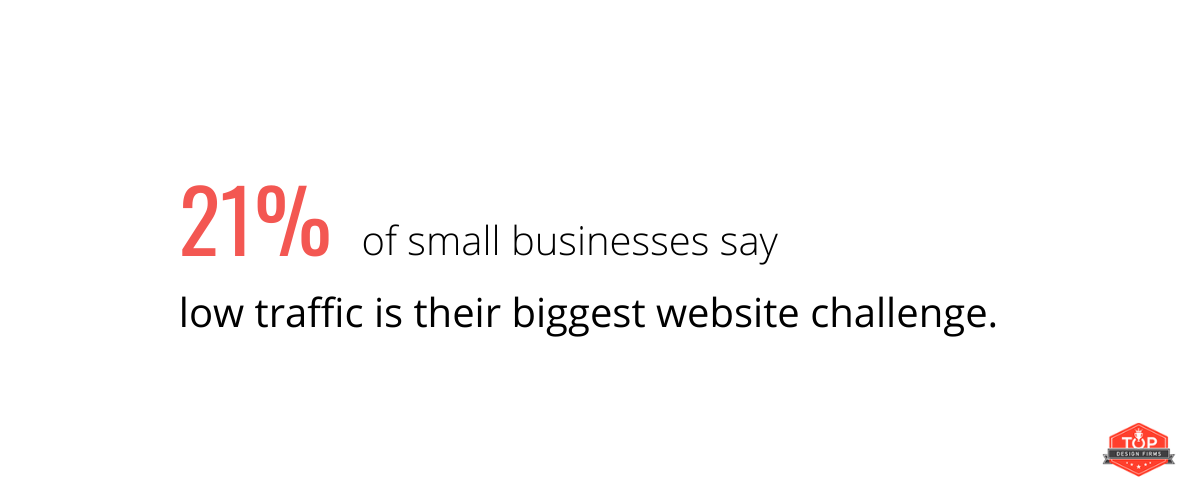 Some other challenges small businesses face include:
Some other challenges small businesses face include:
- A lack of time and knowledge to maintain an website (14%)
- Changes in search engine ranking (12%)
Search engine optimization (SEO) is one of the best ways for small businesses to improve their traffic and organic search engine rankings. SEO, however, requires time, expertise, and patience to execute successfully. One SEO practice that does not require a high level of technical expertise is content creation. Small businesses can establish a blog on their website to improve website traffic and attract leads to the top of the sales funnel. A blog can help businesses target specific keywords to help improve their websites’ organic rankings. Google’s search engine crawlers index long-form content to help evaluate the usefulness of a website. Free SEO tools can help small business writers identify relevant keywords with low competition to increase the changes of ranking in organic searches. Establishing and maintaining a blog, however, can be challenging for small businesses with limited in-house staff and resources. One way to manage a small business blog with limited resources is to create a content calendar with a publishing cadence that prioritizes high-quality content without spreading in-house teams too thin. Blogs require designers and writers to keep people engaged with the content. Small businesses can hire freelance writers or full-time web designers and professionals to help manage the content efforts.
Improve Page Speed and Performance
Small business websites need to be high-functioning to entice and retain customers. A slow or defunct website Almost half of small businesses (43%) plan to invest in improvements to page speed and website performance in 2021. 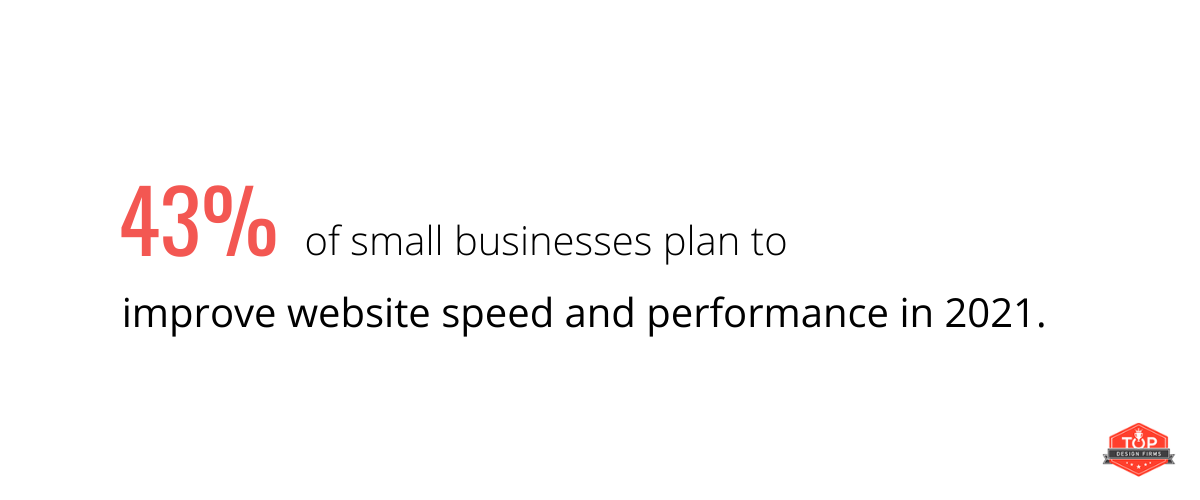 Website speed and performance are not just important for building relationships with customers. Google prioritizes website performance when evaluating websites for organic rankings. Website functionality has always been a factor in organic search engine ranking. In 2020, however, Google announced an algorithm update in advance that revealed new priorities for website developers and designers. Small businesses, therefore, must make sure their websites are functional or risk penalties from Google, such as decreased organic rankings. Fortunately, Google provides tools that small businesses can use to evaluate and address any potential website issues. Google Search Console helps businesses understand their website’s performance, which will in turn help them optimize for SEO.
Website speed and performance are not just important for building relationships with customers. Google prioritizes website performance when evaluating websites for organic rankings. Website functionality has always been a factor in organic search engine ranking. In 2020, however, Google announced an algorithm update in advance that revealed new priorities for website developers and designers. Small businesses, therefore, must make sure their websites are functional or risk penalties from Google, such as decreased organic rankings. Fortunately, Google provides tools that small businesses can use to evaluate and address any potential website issues. Google Search Console helps businesses understand their website’s performance, which will in turn help them optimize for SEO. 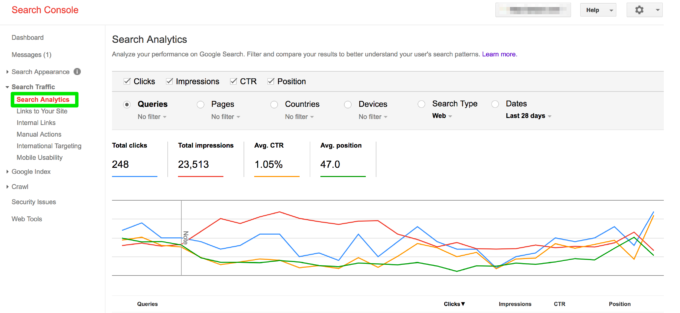 Source When optimizing their online presence, small businesses should also take care to optimize for mobile. About one-third of small businesses (34%) plan to optimize their websites for mobile in 2021. Search engines should not be the only audience small businesses consider when updating websites, though. A fast and high-functioning website will be instrumental in creating a website that customers love to visit.
Source When optimizing their online presence, small businesses should also take care to optimize for mobile. About one-third of small businesses (34%) plan to optimize their websites for mobile in 2021. Search engines should not be the only audience small businesses consider when updating websites, though. A fast and high-functioning website will be instrumental in creating a website that customers love to visit.
Experiment With Different Website Features
Blogs are an important step towards a larger content strategy, but small businesses should experiment with different types of website content to provide value for current and potential customers. Almost one-third of small businesses (30%) plan to embed videos on certain website pages in 2021. 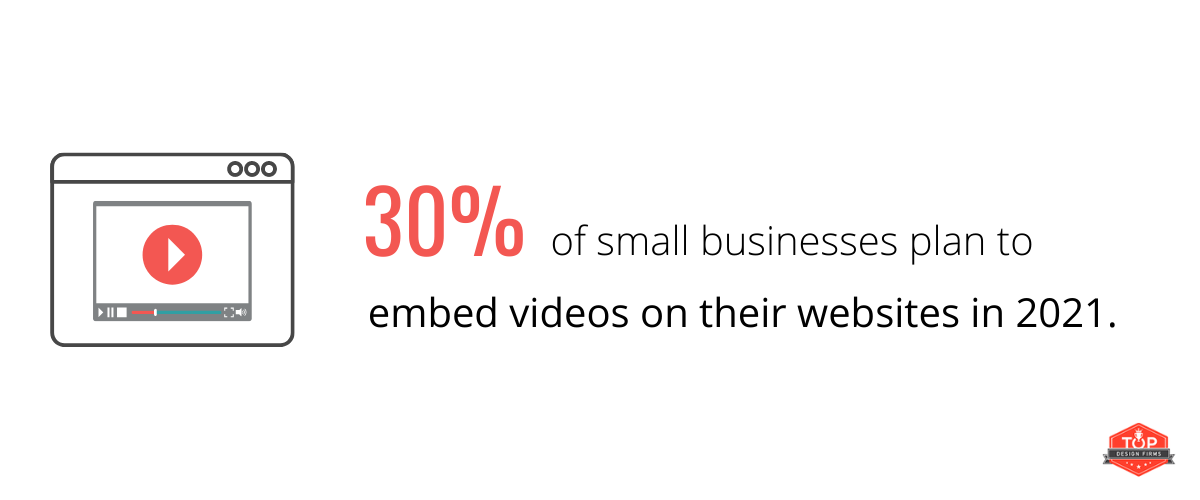 Other features small businesses plan to invest in include:
Other features small businesses plan to invest in include:
- Virtual reality (19%)
- Chatbots (18%)
- “Dark mode” design (18%)
Different and exciting website features such as videos, chatbots, and VR are engaging features that can retain customers and other videos to a website. Videos and VR, for example, can help customers envision a company’s products in their lives. Small businesses looking to try video content can start by creating basic product demonstrations to embed on their website. Product demonstrations help customers assemble or use a product, and inform potential customers about a product’s capabilities. Popular meditation app Headspace, for example, embeds a product demonstration video from its YouTube channel into the main page for its website. 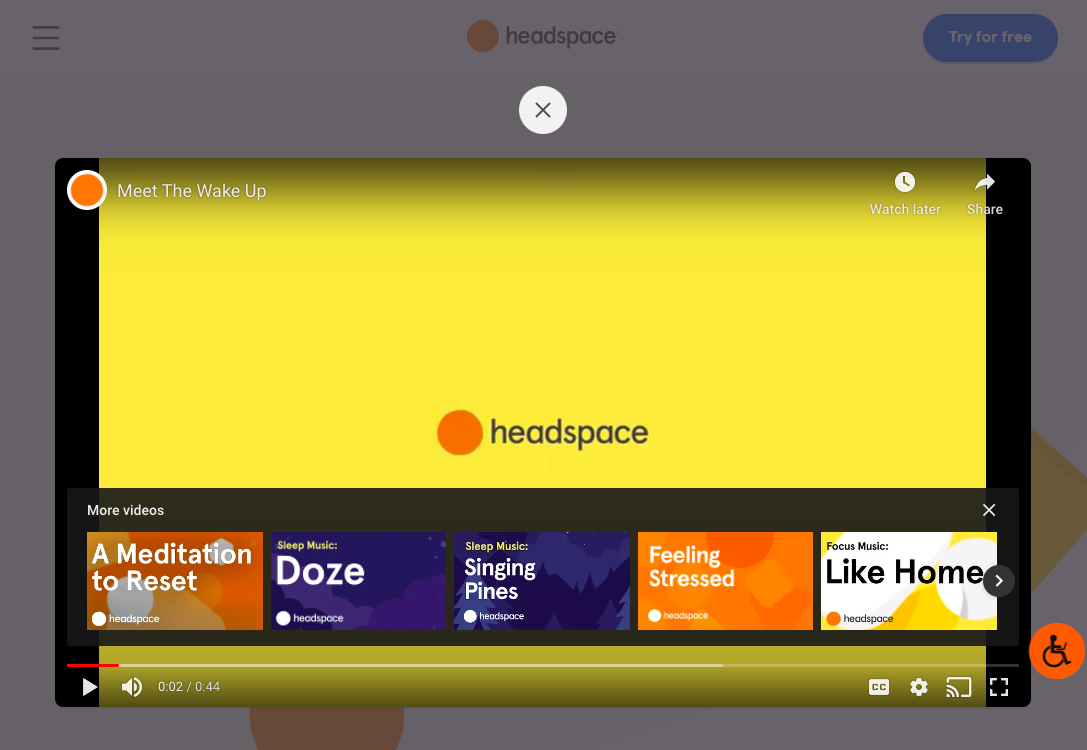 Source As a result, potential customers can understand how the Headspace app works as soon as they land on the page. Videos do not have to be costly endeavors, either. Small businesses can create basic videos using inexpensive equipment and editing software. If videos prove to be a success, it might be time to consider investing in a professional video producer. Small businesses shouldn’t be afraid to try new forms of content or website features that can have positive impacts on website visitors.
Source As a result, potential customers can understand how the Headspace app works as soon as they land on the page. Videos do not have to be costly endeavors, either. Small businesses can create basic videos using inexpensive equipment and editing software. If videos prove to be a success, it might be time to consider investing in a professional video producer. Small businesses shouldn’t be afraid to try new forms of content or website features that can have positive impacts on website visitors.
An Online Presence Is Essential for Small Businesses in 2021
Businesses require an online presence to reach customers and drive profits in 2021. Creating a website is an easy way to achieve business goals. Most small businesses have a website, but a few are still reluctant to invest in one. Websites can help those small businesses reach more customers and convert more leads into sales. To maintain an online presence, small businesses can combine the strengths of an in-house team with the expertise of a web design and UX agency to ensure the website is optimized for usability. The most popular reason small businesses create websites is to promote products and services. Small businesses should also focus on creating a shopping experience that entices website visitors towards making a purchase. Almost half of small businesses plan to improve their website’s page speed and performance. This will be critical, as Google will soon prioritize site performance when evaluating rankings. Once a website is set up and finalized, small businesses should experiment with new types of content such as video and VR to entice customers.
About the Survey
Top Design Firms surveyed 500 small business owners and managers at companies in the U.S. with fewer than 500 employees or fewer. We define small businesses as having limited revenue and between 1 and 500 employees, which corresponds to the Small Business Administration's definition of small business. The survey ran in December 2020. Seven percent (7%) of respondents’ businesses have 1 employee; 36% have 2 to 10 employees; 25% have 11 to 50 employees; 18% have 51 to 250 employees; 15% have 251 to 500 employees. Fifty-three percent (53%) of respondents are female; 47% are male. Four percent (4%) of respondents are Generation Z (born after 1996); 23% are millennials (1981-1996); 50% are Generation X (1965-1980); and 23% are baby boomers or older (before 1965). More than one-third (35%) of small businesses are located in the South; 23% are in the Northeast, 22% are in the West, and 20% are in the Midwest.
Need help selecting a company?
Based on your budget, timeline, and specifications we can help you build a shortlist of companies that perfectly matches your project needs. Get started by submitting your project details.